. 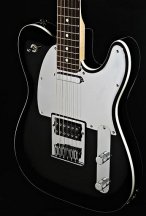 I purchased this beaut in the summer of 2005. The Tele J5 signature model
was a "gotta have" instrument that I needed to round out my arsenal of
Teles. The hot pickups, special features and very unusual headstock design
piqued my interest as soon as I came across it in the new Fender catalogue.
The price of the Fender Custom Shop model with Bigsby was prohibitive,
however.
I purchased this beaut in the summer of 2005. The Tele J5 signature model
was a "gotta have" instrument that I needed to round out my arsenal of
Teles. The hot pickups, special features and very unusual headstock design
piqued my interest as soon as I came across it in the new Fender catalogue.
The price of the Fender Custom Shop model with Bigsby was prohibitive,
however.
My solution was to order the much more affordable Mexican-made model
sans Bigsby and to install a designed-for-Tele Bigsby I had bought earlier
on e-Bay. Unfortunately, this Bigsby kit was designed for the standard
Tele pup layout, but with the help of friend Jim Ghidoni we did some drastic
metal cutting in his hot rod custom shop and adapted stock Tele Bigsby
plate to fit over the J-5 bridge pickups. While at it we installed my patented
B-bender rod to the headstock.
This is indeed a custom model - I've done modifications to this very
expensive instrument that would make most guitar aficionados shudder :
)
FENDER J5 TELECASTER®
SPECS FROM FENDER
This unusual Telecaster guitar was co-designed by talented shred-meister
John 5 himself. Its aggressive Fender Enforcer™ humbucking pickup at the
bridge position and Custom Shop Twisted Tele™pickup at the neck will melt
even the heaviest metals. Other features include a three-way pickup selector
switch, chrome hardware and a radically distinctive headstock design.
 Model
Number: 013-9000-(306) Model
Number: 013-9000-(306)
Series: Artist Series
Colors: (306) Black, (Polyester Finish)
Body: Ash
Neck Maple, ‘60s “C” Shape, (Polyurethane Finish)
Fingerboard: Rosewood, 12” Radius (305 mm)
No. of Frets: 22 Medium Jumbo Frets
Pickups: 1 Custom Shop “Twisted” Tele® Single-Coil (Neck),
1 Enforcer™ Humbucking Pickup (Bridge)
Controls: Volume (Neck Pickup), Volume (Bridge Pickup)
Pickup Switching: 3-Position Toggle:
Position 1. Bridge Pickup
Position 2. Bridge and Neck Pickups
Position 3. Neck Pickup
Bridge: American Tele 6-Saddle Humbucker Bridge with Chromed
Brass Saddles
Machine Heads: Fender®/Schaller® Deluxe Staggered Cast/Sealed
Tuning Machines
Hardware: Chrome
Pickguard: 1-Ply Chrome
Scale Length: 25.5” (648 mm)
Width at Nut: 1.6875” (43 mm)
Introduced: 7/2004
 Unique
Features: Unique
Features:
Matching Black Painted Headstock,
Bound Top,
Toggle Switch Mounted on Upper Bout,
Chromed Brass Pickguard,
Chrome Switch Tip,
3-Over/3-Under Modified Tele XII Headstock Shape,
No Jack Flat Spot on Body Perimeter,
Dot Position Inlays
Strings Fender Super 250L, Nickel Plated Steel, (.009 to .042),
p/n 073-0250-003
Case Accessories: Deluxe Gig Bag
015-5000- J5 Bigsby® Telecaster, rosewood………………US$3,634.99
015-5000- J5 Telecaster, rosewood………………….......…US$3,295.99
013-9000- J5 Telecaster, rosewood (w/gig bag)….…………US$1,041.99
Reference: www.Fender.com
Copyright © 12.03.2005 Fender Musical Instruments
Corporation. All rights reserved

Click for Tele J5 Service
Manual
|
EVOLUTION OF THE FENDER TELECASTER
Adapted from Fender.com
1949: Leo Fender's ideas for a solid-body
electric Spanish guitar gradually take shape. The instrument will be loud
without being prone to feedback, with the piercing tone characteristic
of Fender steel guitars and a detachable neck for easy construction, adjustment
and repair. It will be easy to tune precisely, easy to hold, easy to play
and affordable to working musicians. He builds a prototype over the summer,
followed by an improved second prototype in the fall.
1950: Promotion begins in spring for Fender's
new solid-body electric Spanish guitar, a single-pickup instrument that
Fender sales chief Don Randall names the Esquire. In fall,
truss rods are added to the necks, and a two-pickup version goes into production;
Randall names this model the Broadcaster.
1951: Single-pickup Esquire guitars with
reinforced necks go into full production in January. In February, Randall
renames the dual-pickup Broadcaster model the Telecaster.
1952: The controls of the Telecaster (two
knobs and a three-way switch) are reconfigured in such a way that there
is no setting in which both pickups are on simultaneously; an arrangement
that last until 1967.
1954: The color of the Telecasters´s
pickguard is changed from black to white. One of the great early Telecaster
albums, 2 Guitars Country Style, by Speedy West and Jimmy Bryant
is released. Luther Perkins meets and starts playing guitar with
Johnny
Cash.
1955: The Telecaster's pickup selector
switch tip is changed from the original round type to the "top hat" type.
1956: Moviegoers see the Telecaster (in
its single-pickup Esquire form) on the big screen when it appears in seminal
rock ´n´ roll film The Girl Can´t Help It during numbers
by Little Richard and Gene Vincent. Johnny Burnette
and the Rock ´n Roll Trio record their first album in a Nashville
studio. On a rock ´n´ roll version of 1951 jump blues song
"The Train Kept-A-Rollin´," guitarist Paul Burlison uses his Telecaster
to play one of the first recorded instances-if not the first recorded instance-of
a contemporary fuzz guitar sound.
1957: Dale Hawkins scores what is
probably the first Telecaster-fueled U.S. Top 40 hit with "Susie Q," a
song built on a catchy guitar lick by his band´s young guitarist,
James
Burton.
1958: The previously blonde-finish-only
Telecaster becomes available in custom color finishes for an additional
5 percent cost. Fender changes its two-color sunburst finish to a three-color
sunburst. James Burton joins Ricky Nelson's band. Muddy
Waters tours England in October, shocking audiences who were expecting
folksy acoustic sounds by blasting out loud, stinging blues on his Telecaster.
1959: The first significant variation of
the Telecaster, the Custom Telecaster, is introduced, with a bound body
and rosewood fingerboard. Bakersfield Sound pioneer Buck Owens charts
his first singles with "Second Fiddle" and "Under Your Spell Again."
1962: Booker T. and the M.G.s release
Green Onions, featuring the impeccable Telecaster work of Steve Cropper.
1963: "Act Naturally" becomes the first
number-one hit for Buck Owens and the Buckaroos; it also marks fiddle
player Don Rich´s first appearance on lead guitar (Owens´s
Telecaster).
1964: In the U.K., the Yardbirds
play "Louise" and "I Wish You Would" on Granada Television's Go Tell
it on the Mountain in July, with relatively new guitarist Eric Clapton,
19, tearing up both songs on a red Telecaster.
1965: In order to save money, Who
guitarist Peter Townshend takes to playing and then smashing sturdier,
less-expensive Telecaster guitars (as opposed to more delicate and more
expensive Rickenbacker guitars) for the group's destructive set-closing
number, "My Generation." He continues this practice into 1966. Jeff
Beck replaces Eric Clapton in the Yardbirds; his main guitar is a 1954
Esquire.
1966: The Telecaster becomes a vital part
of the Merle Haggard sound.
1967: The Telecaster is used on albums
by The Beatles, Pink Floyd, and many blues artists. Gene
Parsons and Clarence White (the Byrds, Nashville West)
invent the Pasons/White String Pull, later known as the B-Bender,
and equip White´s ´56 Telecaster with it (Fender released its
own B-Bender-equipped Telecaster 33 years later). The Telecaster´s
controls are reconfigured so that the three-way switch delivers neck pickup/both
pickups/bridge pickup operation.
1968: Fender acoustic guitars chief Roger
Rossmeisl develops a new hollow-body version of the Telecaster called
the Telecaster Thinline, which features an f hole and an elongated
pearloid pickguard. The "Paisley Red" and "Blue Flower" Telecaster models
are introduced. The Tele is used on albums by Led Zeppelin, Albert Lee,
Roy Buchanan and many others. George Harrison plays a custom
rosewood Telecaster atop the London headquarters of the Beatles' company,
Apple, during the famous Jan. 20, 1969, rooftop concert that would be the
group's final live performance. James Burton joins Elvis Presley's
band. Albert Lee records tracks for his first solo album, Black
Claw and Country Fever. In October, guitarist Jimmy Page uses a
Telecaster to record most of the guitar parts on Led Zeppelin´s eponymous
debut album.
1971: The single-coil pickups on the Telecaster
Thinline are replaced with humbucking pickups. Keith Richards
acquires what will become one of his favorite guitars, a butterscotch 1953
Telecaster he nicknames "Micawber" after a character in Dickens´
David Copperfield. On quintessential Led Zeppelin epic "Stairway
to Heaven," Jimmy Page plays a memorable solo on his ´59 Telecaster.
PBS airs hour-long documentary film Introducing Roy Buchanan, about
Roy Buchanan, which earns the guitarist a record deal (with Polydor) and
an invitation to join the Rolling Stones (which he declines). Buchanan´s
main guitar is a ´53 Telecaster he nicknamed "Nancy." His debut album,
Buch and the Snakestretchers, is released this year.
1972: Fender introduces the Telecaster
Custom, which has a humbucking neck pickup and single-coil bridge pickup.
Bruce
Springsteen´s debut album, Greetings From Asbury Park, N.J.,
is recorded.
1973: Telecaster Deluxe is introduced,
with two humbucking pickups, a Stratocaster-style headstock and a choice
of hard-tail or tremolo bridge.
1974: Steve Howe uses his 1955 Telecaster
for most of what many consider Yes´s most musically progressive album,
Relayer.
1975: Bruce Springsteen´s
breakthrough album, Born to Run, is released; the famous album cover photo
is of Springsteen holding his modified Fender Esquire. American Music,
the first album by Washington, D.C., guitarist Danny Gatton, is
released.
1976: In London, Joe Strummer leaves
his old band, the 101'ers, and accepts an invitation to join a new band,
the Clash, which makes its live debut in July in Sheffield, England,
opening for the Sex Pistols. His main guitar for the duration of the band's
legendary career is a battered 1966 Telecaster.
1977: Andy Summers joins the Police
and subsequently uses his battered 1961 Telecaster on all of the group´s
chart-topping hit singles and albums.
1978: The Pretenders form in Hereford,
England; leader Chrissie Hynde remains a devoted Telecaster player
throughout the band's career.
1982: Newly created Fender Japan plans
the first Vintage series reissue instruments, including a 1952 Telecaster
model.
1983: The short-lived Elite Telecaster
is introduced.
1984: Fender Japan introduces more Vintage
series reissue models, including a 1962 Custom Telecaster, and 1972
Telecaster Custom and Telecaster Thinline models.
1985: The American Standard Telecaster
is introduced by the new post-CBS Fender.
1988: The Fender Custom Shop produces the
40th
Anniversary Telecaster model.
1990: The first artist signature
Telecaster models are introduced, bearing the names of Albert Collins,
Danny Gatton and James Burton.
1992: The Jerry Donahue Telecaster
is introduced.
1993: The Clarence White Telecaster
is introduced.
1995: The Waylon Jennings Telecaster
is introduced. The Fender Custom Shop produces its first beat-up or "relic-ed"
replica guitars; these soon include a ´50s-era Nocaster
model. "Britpop" is in full swing in the U.K.; the movement´s top
guitarists, Graham Coxon (Blur) and Jonny Greenwood (Radiohead),
are avowed Telecaster devotees.
1997: Merle Haggard and Will
Ray Telecaster models are introduced.
1999: The Deluxe Nashville Power Telecaster
is
introduced. Brad Paisley´s debut album, Who Needs Pictures,
is released.
2004: John 5 Telecaster with 3by3
tuning keys on a unique "shovel" head.
2006: The Highway One Telecaster
introduced.
2007: The Vintage Hot Rod ´52
Tele, Blackout Telecaster, Deluxe Nashville Tele, G.E. Smith Telecaster,
Jim Root Telecaster, John 5 Triple Tele Deluxe, Joe Strummer Telecaster
and Fender Custom Shop Andy Summers Tribute Telecaster are introduced.
2008: The Jim Adkins JA-90 Telecaster Thinline
and newly redesigned American Standard series Telecaster are introduced.
James
Burton is inducted into the Fender Hall of Fame and is present
at the ceremony.
2009: The Road Worn ´50s Telecaster
is introduced.
2010: The American Special Telecaster,Acoustasonic
Telecaster and Blacktop Telecaster HH are introduced.
2011: The Road Worn Player Telecaster
is introduced.
|



 .
.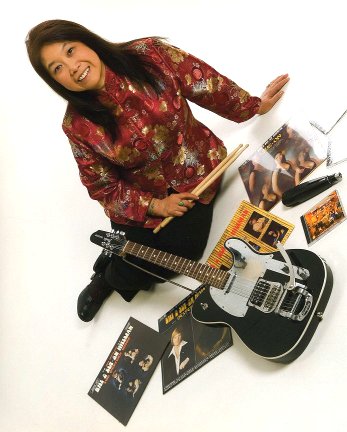 .
.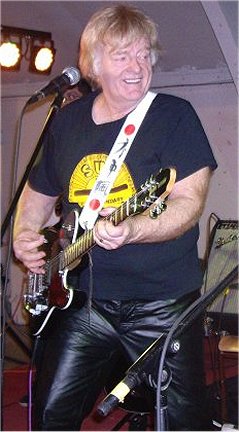

![]()
![]()
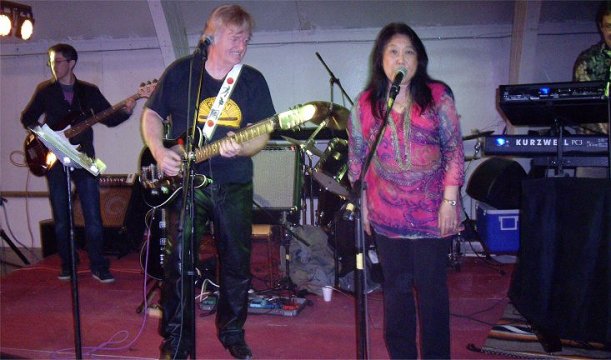
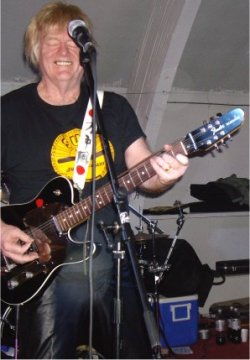


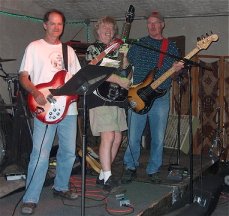
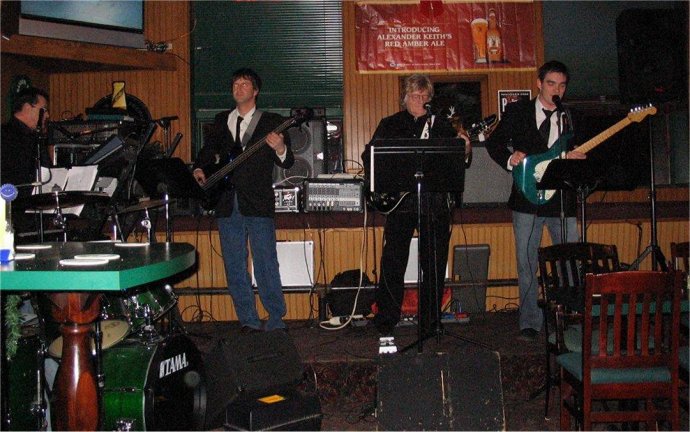
![]()




